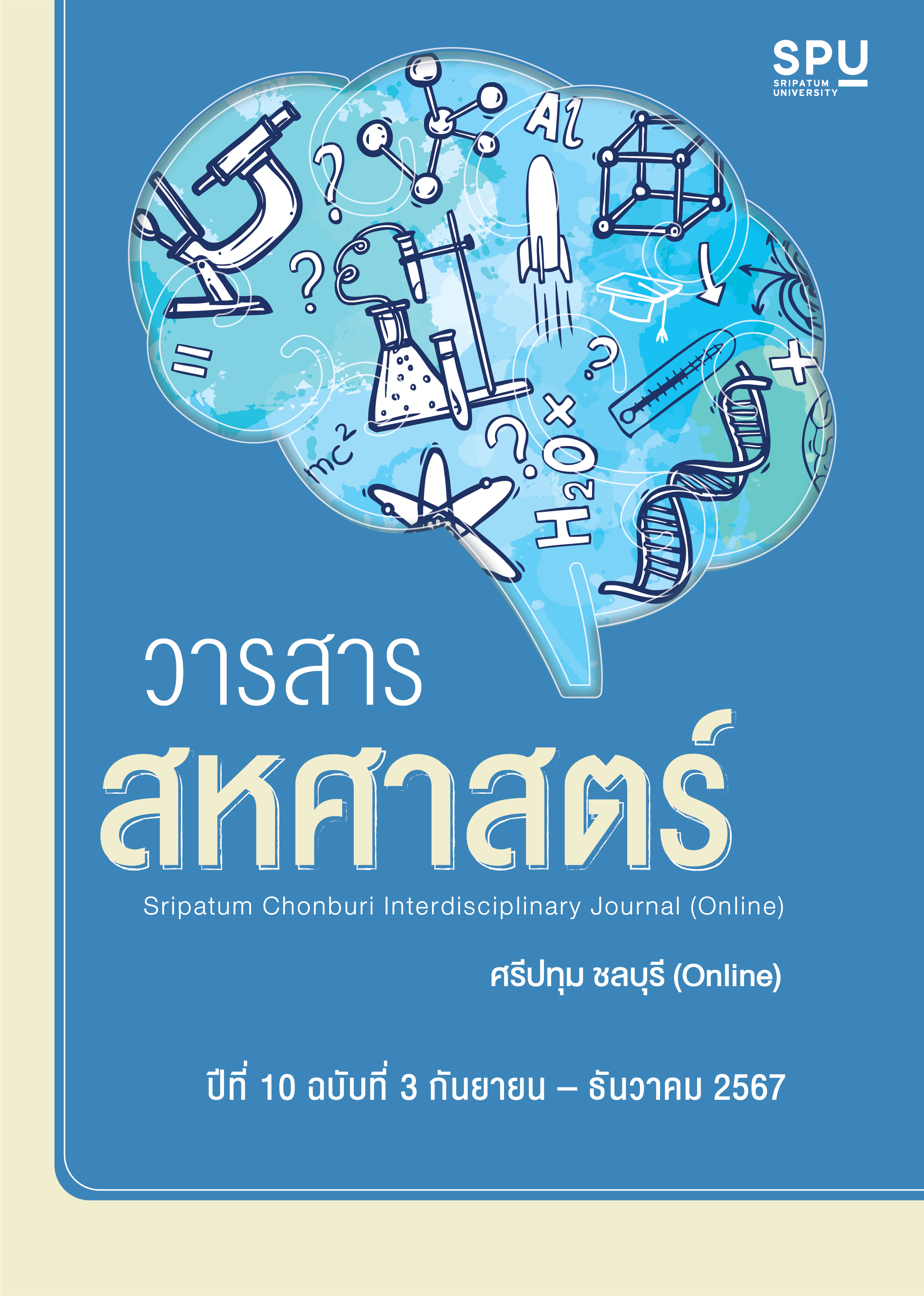A STRUCTURAL MODEL OF VALUE CO-CREATION OF THAI CONSUMERS IN E-TAILING BUSINESS
Keywords:
Value Co-Creation, Co-Creation Experience, Willingness to Co-Creation, Customer engagement, e-tailing businessAbstract
The research on a structural model of value co-creation of Thai consumers in e-tailing business has two objectives of 1)developing a structural model of value co-creation of Thai consumers in the e-tailing business and 2) analyzing the effects of factors affecting a structural model of value co-creation of Thai consumers in the e-tailing business. The population were Thai people who used to buy online and visited shopping centers in Bangkok. The self-administered questionnaires were used to collect the data which were analyzed using structural equation modeling techniques. The research results found that only value co-production affected co-creation experience (H1) and willingness to co-creation (H2), and also found that the variables did not have any indirect effects.
References
นรินทร์ ตันไพบูลย์. (2567). แนวโน้มธุรกิจ/อุตสาหกรรม ปี 2567-2569: ธุรกิจร้านค้าปลีกสมัยใหม่ (ออนไลน์). เข้าถึงได้จาก: https://www.krungsri.com/th/research/industry/industry-outlook/wholesale-retail/modern-trade/io/modern-trade-2024-2026 [2567, 20 กันยายน].
สำนักงานสถิติแห่งชาติ. (2565). การสำรวจการมีการใช้เทคโนโลยีสารสนเทศและการสื่อสารในครัวเรือน พ.ศ. 2565. กรุงเทพฯ: กระทรวงเทคโนโลยีสารสนเทศและการสื่อสาร.
AbdelAziz, K., Md Saad, N. H. & Thurasamy, R. (2021). Analysing the factors influencing customer engagement and value co-creation during COVID-19 pandemic: the case of online modest fashion SMEs in Egypt. Journal of Islamic Marketing, 14(1), pp. 1759-0833.
https://doi.org/10.1108/JIMA-09-2020-0294
Anshu, K., Gaur, L. & Singh, G. (2022). Impact of customer experience on attitude and repurchase intention in online grocery retailing: A moderation mechanism of value Co-creation. Journal of Retailing and Consumer Services, 64(1), 102798. https://doi.org/10.1016/j.jretconser.2021.102798
Chan, H., Fazira, E., Hu, H. & Neubronner, J. (2022). Top 100 Retailers in Asia 2022. Available: https://go.euromonitor.com/white-paper-retailing-220623-top_100_retailers_in_asia_2022.html [2024, September 20].
Collier, J. (2020). Applied structural equation modeling using AMOS: Basic to advanced techniques. New York, NY: Routledge.
Dellaert, B. G. (2019). The consumer production journey: marketing to consumers as co-producers in the sharing economy. Journal of the Academy of Marketing Science, 47(2), pp. 238-254.https://doi.org/10.1007/s11747-018-0607-4
Hair, J. F., Black, W. C., Babin, B. J. & Anderson, R. E. (2014). Multivariate Data Analysis (7th ed). New Jersey, NJ: Pearson Education, Upper Saddle River.
Heidenreich, S. & Handrich, M. (2015). Adoption of technology-based services: the role of customers’ willingness to co-create. Journal of Service Management, 26(1), pp. 44-71.
Hollebeek, L. D., Srivastava, R. K. & Chen, T. (2019). S-D logic–informed customer engagement: integrative framework, revised fundamental propositions, and application to CRM. Journal of the Academy of Marketing Science, 47, pp. 161-185.
Kesenduran, N., Yumurtacı Hüseyinoğlu, I. Ö. & Erboz, G. (2024). The role of value co-creation on retailer loyalty and omni-channel shopping frequency. International Journal of Retail & Distribution Management, 52(5), pp. 580-595.
Lim, H. & Dubinsky, A. J. (2005). The theory of planned behavior in e-commerce: Making a case for interdependencies between salient beliefs. Psychology & Marketing, 22(10), pp. 833-855.https://doi.org/10.1002/mar.20086
Merz, M. A., Zarantonello, L. & Grappi, S. (2018). How valuable are your customers in the brand value co-creation process? The development of a Customer Co-Creation Value (CCCV) scale. Journal of business research, 82, pp. 79-89. https://doi.org/10.1016/j.jbusres.2017.08.018
Mustak, M., Jaakkola, E., Halinen, A. & Kaartemo, V. (2016). Customer participation management: Developing a comprehensive framework and a research agenda. Journal of Service Management, 27(3), pp. 250-275.https://doi.org/10.1108/JOSM-01-2015-0014
Prahalad, C.K. & Ramaswamy, V. (2002). The co-creation connection. Strategy and Business, 27(2), pp. 51-60.
Prahalad, C.K. & Ramaswamy, V. (2004). Co-creation experience: the next practice in value Creation. Journal of Interactive Marketing, 18(3), pp. 5-14.
Ramirez, R. (1999). Value co-production: intellectual origins and implications for practices and research. Strategic Management Journal, 20(1), pp. 49-65.https://doi.org/10.1002/(SICI)1097-0266(199901)20:1<49::AID-SMJ20>3.0.CO;2-2
Ranjan, K. R. & Read, S. (2016). Value co-creation: concept and measurement. Journal of the academy of marketing science, 44, pp. 290-315.https://doi.org/10.1007/s11747-014-0397-2
Schallehn, H., Seuring, S., Strähle, J. & Freise, M. (2019). Defining the antecedents of experience co-creation as applied to alternative consumption models. Journal of Service Management, 30(2), pp. 209-251.https://doi.org/10.1108/JOSM-12-2017-0353
Stocchi, L., Michaelidou, N., Pourazad, N. & Micevski, M. (2018). The rules of engagement: How to motivate consumers to engage with branded mobile apps. Journal of Marketing Management, 34(13-14), pp. 1196-1226.https://doi.org/10.1080/0267257X.2018.1544167
Wongsansukcharoen, J. (2022). Effect of community relationship management, relationship marketing orientation, customer engagement, and brand trust on brand loyalty: The case of a commercial bank in Thailand. Journal of Retailing and Consumer Services,
, 102826.



